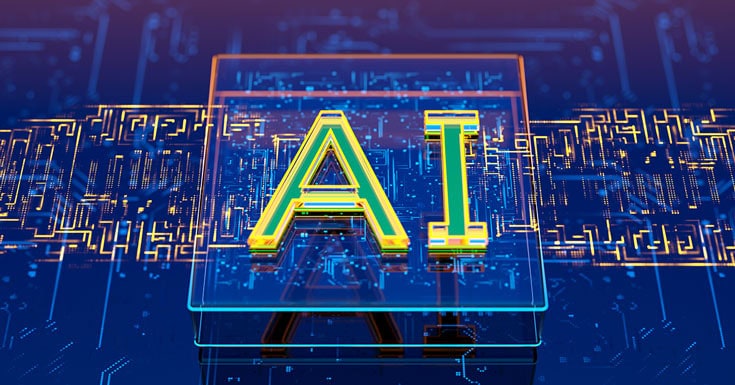Open-Source vs. Closed-Source AI Applications in Higher Education
Senior Analyst

Nearly all organizations across every industry, including higher education, are considering how to leverage artificial intelligence (AI) and to what extent. One common question, among many regarding AI, is: Should our institution adopt open-source or closed-source AI applications?
In this blog post, we will explore the definitions, potential use cases, opportunities, challenges, and other considerations of each approach to help colleges and universities make informed decisions.
What are Open-Source and Closed-Source AI Applications?
Open-source AI applications, such as Llama by Meta or Mixtral by Mistral AI, have publicly accessible model architecture and weights that users can modify, customize, and distribute. Their open nature allows for innovation and community-driven development. In contrast, closed-source AI applications have private model architectures and weights, limiting customization and redistribution to select vendors or organizations. Users can often purchase closed-source versions of open-source applications from providers.
Potential AI Use Cases for Higher Education Institutions
Both open-source and closed-source AI applications offer numerous potential use cases for higher education institutions. We see institutions adopting AI applications in three core areas
Administrative AI Use Cases
Institutions use AI to help streamline administrative tasks by automating routine processes. For example:
- Admissions: AI algorithms enhance the admissions process by analyzing applicant data to predict enrollment likelihood and success, optimizing admissions strategies and improving yield rates.
- Student support: Chatbots and virtual assistants provide students with 24/7 access to information and support for financial aid, registration, and academic advising, enhancing the student experience and reducing the staff’s workload.
- Student success: AI can analyze an institution’s student data from various data sources, such as student information systems and learning management systems, to identify at-risk students early and intervene with targeted support services, improving retention and graduation rates.
Academic AI Use Cases
AI is helping to transform the student learning experience, including:
- Customized learning experiences: AI-driven student platforms enable customized learning experiences by analyzing individual student data, including performance, learning styles, preferences, and career goals, and aligning them to the best-fit courses.
- Dynamic education content: Faculty can leverage AI to develop digital textbooks and interactive media designed to meet specific learning objectives and adapt to students’ knowledge levels.
- Assessments: AI technologies can be used to automate and enhance the assessment of student work, including exams and essays, to save time and provide objective, bias-free evaluations.
Research AI Use Cases
AI tools are accelerating data analysis, pattern recognition, and hypothesis generation, expediting research advancements and breakthroughs.
- Dataset analysis: AI algorithms excel at analyzing vast datasets, uncovering patterns and insights that advance research in fields like genomics, public health, climate science, and social sciences.
- Streamlined research processes: AI tools can automate literature reviews, data collection, and even the initial drafting of research papers.
- Resource allocation: AI tools can predict the potential impact of research proposals, helping institutions and funding bodies allocate resources more effectively to projects with the highest potential for breakthroughs and societal benefit.
Opportunities & Challenges of Open-Source AI Applications for Higher Education
While every technology decision and investment has numerous pros and cons, let’s explore a few opportunities and challenges institutions may face with open-source AI applications.
Opportunities
- Cost-effectiveness: Open-source software does not have licensing fees, reducing financial barriers and increasing accessibility for resource-constrained institutions.
- Flexibility and customization: Open-source AI applications can be tailored to an institution’s specific needs, facilitating customization and scalability for more adaptable and versatile solutions.
- Collaborative development: Through open-source AI applications, institutions can tap into a global community of developers and experts to continuously improve the software’s functionality and security. This allows institutions to innovate more quickly.
Challenges
- Technical support and expertise: With open-source applications, the responsibility for support and issue resolution largely falls on the college or university unless they leverage commercial support services. Implementing and maintaining open-source models may require specialized technical skills and resources.
- Integration and compatibility issues: Integrating open-source AI applications with existing systems and infrastructure may require additional effort and resources, especially if integrating multiple open-source AI applications.
- Privacy and security concerns: Institutions must have data privacy and security policies and safeguards in place, especially regarding AI processing or storing sensitive or private information. Further, institutions must be mindful of malicious actors who look for opportunities to exploit vulnerabilities in open-source AI applications. For instance, a study conducted by JFrog revealed that approximately 100 machine learning (ML) models uploaded to the Hugging Face artificial AI platform could potentially allow attackers to inject malicious code into user machines. These findings highlight the increasing risk associated with the tampering of publicly available AI models for malicious purposes.
Opportunities & Challenges of Closed-Source AI Applications in Higher Education
Opportunities
- Reliable vendor support: Closed-source AI vendors generally provide dedicated and timely support, regular updates, and maintenance services.
- Streamlined integrations and advanced features: Closed-source applications are often designed to seamlessly integrate with other proprietary software, minimizing compatibility and integration issues. Vendor investments in research and development also usually result in advanced features and enhanced performance compared to open-source alternatives.
- Robust security: Vendors know that security is vital to establishing trust and ensuring customer adoption, so they have protections to avoid cyberattacks and other vulnerabilities that may expose an institution’s valuable data and information. Vendors often must adhere to specific security standards and best practices. In addition, the vendor would carry some level of liability should an issue arise.
Challenges
- Cost: The benefits of the closed-source model come with higher up-front or subscription costs compared to open-source alternatives.
- Customization limitations: Institutions may encounter restrictions on the extent to which they can tailor the model to their needs, including added features, integrations, or data sources. With most closed-source models, the vendor controls the level of customization.
- Vendor dependency: While vendor support can be an opportunity, it can also be a challenge because it can make the institution dependent on the vendor for updates, maintenance, security patches, and ongoing support. This can leave the institution vulnerable should the vendor not deliver.
Considerations When Choosing Between Open-Source and Closed-Source AI Applications
When deciding between the two approaches, colleges and universities should consider the following
- Longevity: Evaluate the stability, track record, and community support of open-source options or the reputation, experience, and product and innovation roadmap of closed-source vendors.
- Scalability: Assess whether identified AI applications can accommodate the institution’s future growth and evolving needs. (See why we recommend institutions ask these three questions before selecting a new technology.)
- Security and control: Determine how AI will be used and whether the institution prefers the collaborative nature of open-source development or requires the control and secured environment offered by closed-source applications.
- Total cost of ownership: Compare the upfront and ongoing costs associated with each option, including licensing fees, maintenance, support, customization, and security.
Additional Considerations and Market Conditions
While we’ve highlighted a few considerations, it’s important to note that there are AI risks—and strategies to mitigate them—that institutions should also consider. Download our infographic, 10 AI Risks in Higher Education and Strategies for Mitigation, to explore those risks and strategies.
Over the last year, we have observed more institutions shift from banning AI to encouraging faculty, students, and staff to experiment with the technology. Many institutions are also implementing AI policies that currently emphasize data privacy and protection and academic integrity, which is indicative of institutional priorities.
Tambellini Group’s analysis has shown that larger institutions with FTE of 20,000+ are at the forefront of AI policy development and adoption. However, that may change as new efforts are underway to help make AI enhancement and adoption in higher education more equitable, with the American Council on Education’s work to establish the Global Data Consortium in 2025.
Key Takeaways
AI application adoption in higher education holds immense potential for enhancing teaching, learning, administrative processes, and the student experience. Choosing between open-source and closed-source AI applications requires careful consideration of your specific institutional requirements, resources, and short- and long-term goals. Higher education institutions must weigh the opportunities, challenges, use cases, and other considerations highlighted in this blog post to make well-informed decisions that align with their visions for the future.
Need help? The easiest way to determine your institution’s best course of action is to speak to a Tambellini Group analyst about your unique situation and needs. Tambellini provides services to help institutions develop technology strategies, evaluate and select products and services, and more. Explore all our services for institutions.
You Might Also Like
- 10 AI Risks in Higher Education and Strategies for Mitigation infographic
- 3 Questions to Consider When Evaluating New Technology in Higher Education
- Tambellini StarCharts—visual guides that compare critical higher education systems based on usability and innovation.
Categories
- Academic Administration
- Advancement
- AI and ML
- Content Management
- CRM Platforms
- Customer Experience (CX)
- Cybersecurity
- Data Management and Analytics
- Enterprise Portals and Mobile Apps
- Event Management
- Finance
- HCM/HR
- IT Tools and Infrastructure
- Life at Tambellini
- Services
- Student
- Teaching and Learning
- Technology Leadership
- Thought Leadership
- Uncategorized
Share Article:

Other Posts From this Author:
© Copyright 2025, The Tambellini Group. All Rights Reserved.